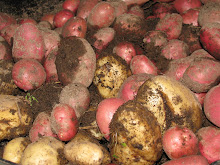“…we are witnessing the emergence of a new geography without geographers” (Sui 2008).
With the surfacing of new Geospatial web applications and the increased access of these technologies to the public, map-making by unschooled geographer’s is on the rise. In this review, I synthesize three articles from Gupltill 2007, Plewe 2007 and Sui 2008 that touch on the implications of what some refer to as Neogeography, where non-experts are harnessing Web 2.0 technologies to not only consume but also produce an ever-growing array of geographic information. The articles suggest that these new movements in map-making pose new questions and possibly new challenges to the way geographers situate themselves and society in the geospatial world.
Stephen Guptill in his brief essay “GIScience, the NSDI, and GeoWiki’s” touches on the changing role of the U.S Geological Survey and GIScience in the age of web based mapping technologies. In his description of the array of changes in mapping technologies, from surveying in the past to the cell phone based data fusion buttons of the future. He urges a partnership between government agencies and the private sector leaders such as Google or Microsoft to deliver services. Finally he puts forward the wave of the future is in combining government data with web-based applications for a platform for a GeoWiki, in order to allow for collaborative spatial data information.
Brandon Plewe’s article “Web Cartography in the United States” divides new frontiers in geography by three service types: consumer-oriented applications, citizen oriented applications and enterprise applications. Stating that each type has undergone different changes in cartography, but each bringing the practice of map-making out to the “mainstream”(133). However, he points out that the importance of design held by cartographers has been left out of the programmer and consumer driven mapping applications. Highlighting, how the professional cartographers are increasingly left out of the map-making picture. At the same time research, in map-making has changed as well, and can be seen to fit into four categories: high-impact applications, improving performance, societal implications, and design of interactive cartography. Plewe, suggests that the later, is where cartographic research could have the most impact. Overall, he urges that cartographers and society should embrace web-based mapping, by making a valuable contribution where the can, because the benefits a spatially thinking populace are without doubt. Although it is left ambiguous what a valuable contribution would look like, maybe a good wrestle with the programmers and some lessons in php.
Sui's article, “The wikification of GIS and its consequences: Or Angelina Jolie’s new tattoo and the future of GIS” takes a look at the implications of these technologies within society. Drawing on his examples of maps made about or from celebrities’ personal information, , he highlights privacy as a an emerging implication of neogeography. Although he sites wikification has occurred in all aspects of GIS components, the most significant changes have occurred to the data side. Pointing to the formation of volunteered geographic information (VGI) prompted from the capability of GIS users to become contributors as well, VGI poses new problems, such as those explored through the example of Angelina Jolie’s, where a map was made by fans from the latitudes and longitude of her children’s birthplace that is displayed on her arm. With VGI ever on the rise, Sui suggests geographers could meet the same Web 2.0 fate of journalists. Media is moving forward without professional journalists, will the new geography lose the need for geographers? From these three articles the theme of neogeography is change. Whether it is the transformation of government Geospatial systems or the very role of cartography itself with the take over of mapmaking by everybody from amateurs to professional computer developers, one thing seems certain as geographers in this century, we can rescind technology development but never the act of critique.
Reference:
GUPTILL, S. (2007). GIScience, the NSDI, and GeoWiki’s. Cartography and Geographic Information Science 34(2):165-166.
PLEWE, B.(2007). Web Cartography in the United States. Cartography and Geographic Information Science 34(2): 133-136.
SUI, D. (2008). The wikification of GIS and its consequences: Or Angelina Jolie’s new tattoo and the future of GIS. Computers, Environment and Urban Systems, 32, 1-5.
Sunday, November 22, 2009
Subscribe to:
Post Comments (Atom)

No comments:
Post a Comment